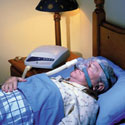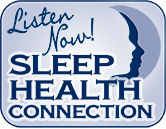Treatment/Management of Snoring/Obstructive Sleep Apnea (OSA)
The specific therapy selected for an individual with Obstructive Sleep Apnea is based on the patient’s medical history, physical examination, and the results of the polysomnography. Multiple treatments are available for Obstructive Sleep Apnea including, but not limited to :
- Behavioral modifications (see below)
- CPAP
- Oral appliance therapy
- Surgery
- Pharmacological treatment – currently marginally effective
Behavioral Modification
Behavioral Modification is an important part of all treatment programs, and in mild cases behavioral therapy may be all that is needed.
- Weight loss, if needed
- Regular exercise
- Avoidance of alcohol, sedatives, hypnotics, and tobacco
- Stress management
- Body positioning during sleep
CPAP
 Nasal Continuous Positive Airway Pressure Device (CPAP) – is the most common and effective treatment for sleep apnea and is considered the gold standard of treatment for Obstructive Sleep Apnea It provides positive-pressure air through a nasal mask to keep airway open during sleep. Nasal CPAP is not “site specific” and is the only treatment which is effective regardless of the location of the obstruction and the severity of the disease. Although this treatment has helped many people, some cannot tolerate this method.
Nasal Continuous Positive Airway Pressure Device (CPAP) – is the most common and effective treatment for sleep apnea and is considered the gold standard of treatment for Obstructive Sleep Apnea It provides positive-pressure air through a nasal mask to keep airway open during sleep. Nasal CPAP is not “site specific” and is the only treatment which is effective regardless of the location of the obstruction and the severity of the disease. Although this treatment has helped many people, some cannot tolerate this method.
Oral Appliance Therapy
Oral Appliance Therapy (OAT) – is a conservative treatment option using an oral appliance for patients to wear at sleep. These devices change the position of mouth structures to maintain an open, unobstructed airway in the throat. There are many types of oral appliances and selection as to which is to be constructed is based on many patient parameters. Proper design, construction, and follow-up care of these devices requires a trained dentist and in depth knowledge of jaw joints and sleep disorders. This type of treatment is “site specific” in that an OAT will have no effect on obstructions high in the upper airway or low in the airway. Patients usually prefer oral appliances to CPAP, however, CPAP is more effective in reducing number of apneas and increasing oxygen levels.
(SEE MORE ON OAT)
Surgery
Except where abnormalities are present (nasal polyps, enlarged tonsils, deviated septum, or jaw malformations) surgery is only 50% effective and many cases which are initially successful fail within five years. The type of surgery that may be required is dependent on site and type of obstruction. Types of surgeries may include but not limited to:
- Uvulopalatopharyngoplasty (UPPP)
- Somnoplasty
- Nasal surgery
- Tracheostomy
- Tonsillectomy / adenoidectomy
- Maxillofacial surgery






(630) 369-5508